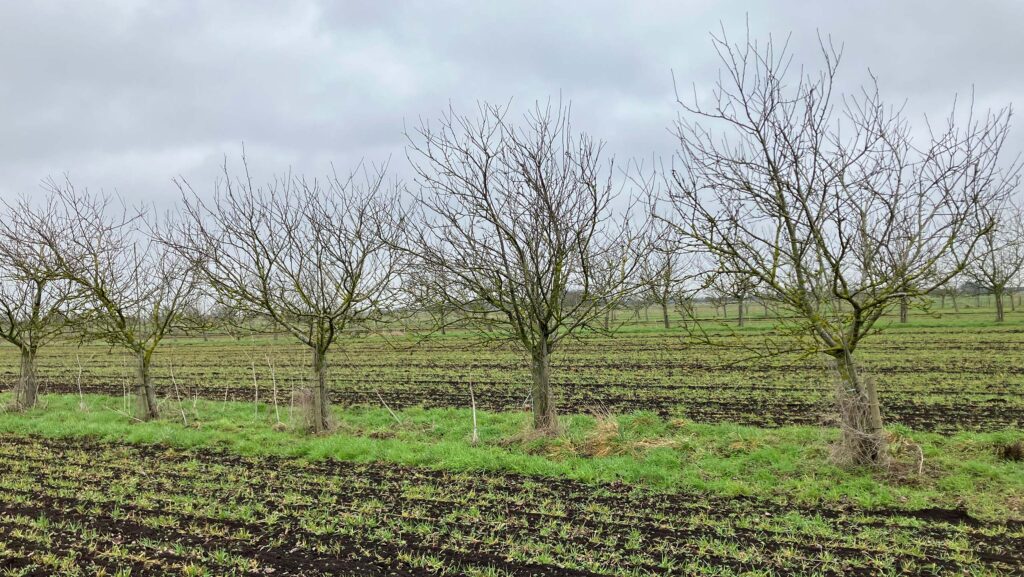What’s in the latest capital grants offer for arable farmers?
 © MAG/Emma Gillbard
© MAG/Emma Gillbard A new round of capital grants worth £150m has opened in England, with arable farmers welcoming the latest opportunity to apply for funding to make environmental improvements.
Against a tight financial background and despite the offer coming just ahead of one of their busiest times of the year, the sudden closure of the last round following exceptionally high demand for certain items is already prompting action and occupying minds.
See also: Groundswell 2025: Regen farming learnings from Gabe Brown
That’s not surprising; the new round of three-year agreements will close when the available funding is committed and as Catchment Sensitive Farming (CSF) support is required for some items, an advisory visit must take place before a successful application, Defra confirms.
At this stage, the government says that it will aim to give reasonable notice of scheme closure and that it expects to open another new round, with further improvements, during 2026.
As a reminder, capital grants can be used for standalone improvements or to complement existing Sustainable Farming Incentive, Countryside Stewardship or Higher Level Scheme agreements, with just one successful application per single business identifier accepted per calendar year.
Designed to enhance biodiversity, protect natural resources and improve the landscape, they are a key part of the funding to support the improvements that farms are being expected to make.
Four new items
In the latest offer, the 78-strong list includes four new capital items (see “What are the new additions?”), with applicants allowed to select multiple items to make environmental improvements from six groups.
What are the new additions?
- Assess Woodland Condition (FY7) This pays £13.63/ha for the first 30ha and then £4.09/ha for any area over 30ha, and it supports the restoration and maintenance of woodland in good ecological condition.
- Create a Wildfire Checklist (WF1) This pays £327.12/farm to help farmers assess and manage the risk of wildfire, both to prevent damage and support emergency preparedness.
- Repair Stone Walls (BN16) This pays £16.17/m to support the restoration of dry-stone walls and maintain the character of the local landscape. The payment rate applies to the length of the boundary being repaired, not each side.
- Educational Access Visits (VED1) This pays £363/visit for up to 25 visits a year, to support visits that help people learn more about farming, food and the natural environment. The visits must be accompanied by the farmer.
Of these six groups – air quality, assessments, boundaries trees and orchards, improvements, natural flood management and water quality – four are subject to funding limits in this round, to help with managing the budget and ensure that more farms benefit.
A maximum of £25,000 applies to air quality, natural flood management and water quality items, while a £35,000 maximum has been put on items relating to boundaries, trees and orchards.
That boundaries cap means that where there are ambitions to plant, gap up and lay hedges, farmers will need to prioritise, says Megan Gimber of the People’s Trust for Endangered Species.
“Only Defra pays for rejuvenation in the form of laying, coppicing and gapping, so that should be the focus with capital grants.
“There are other sources of funding for hedge planting.”
From an all-out arable perspective, most interest is predicted to be in the tree and hedge planting in both the air quality and the boundaries groups, as well as the hedge management items.
Also relevant to many arable units are the natural flood management items – all of which require CSF support – and the water quality items that can help with storage and water management, as well as pollution prevention.
Trees and hedges
A quick scan of the list reveals funding for planting agroforestry trees – with different payment rates for woodland (£5.40/tree) and fruit trees (£17.83/tree) – as well as for hedge laying, hedgerow coppicing and hedgerow gapping up.
Planting new hedges and hedgerow trees is also supported by the grants, along with equipment such as tree guards and wildlife boxes.
The natural flood management group has funding for equipment to disrupt tramlines and reduce run-off as well as small and large leaky dams to slow the flow of water.
Included in the water quality items are concrete yard renewal, underground drainage and pipework, pumps and rainwater goods, with both above- and below-ground storage tanks on the list.
Lined bio beds, sprayer washdown areas and roofing for these water-sensitive locations are also there, having been popular in previous rounds.
Looking ahead, a further four items will be added later this year.
These will cover accreditation for educational access visits, installing and maintaining signs, using tree surgery to hinge a tree into a watercourse and creating or restoring ponds.

